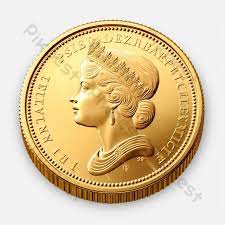Cash is practically forgotten in Russia: the share of non-cash payments in the turnover exceeded 70%. But still nobody canceled paper money. Moreover, the Bank of Russia plans to print new ten-ruble bills. Small money, it turns out, is not enough: coins of the same denomination, which replaced the paper “tens”, settle in piggy banks. Investee was trying to find out whether small money was needed in circulation, especially given the acceleration of inflation.
General bank transfer
According to the Central Bank, in 2020 the share of non-cash payments in Russia jumped immediately from 64.7 to 70.3%. The rapid growth of digital payments was also recorded in the largest financial institutions. At the beginning of this year, Sberbank reported a record growth in cashless turnover in Russia.
According to the SberIndex laboratory and the OFD Platform IT company, the share of non-cash trade turnover in Russia reached 55.9% in the fourth quarter of 2020, and for the entire last year it was 54.1%. The process of moving away from cash continued, even despite a significant increase in the volume of paper money in circulation.
“This confirms our hypothesis that, firstly, the driver of demand for cash is not individuals, but legal entities, and, secondly, a significant part of cash is withdrawn from the visible part of the turnover, that is, it is used in the gray segment of the economy or as savings, ”the study notes. In such a traditionally “cash” category as convenience stores, more than half of spending is carried out (53.1% in the fourth quarter), the authors of the study stated.
Spiral evolution
Nevertheless, they plan to print more paper money. In 2025, the Bank of Russia plans to issue ten-ruble bills with a new design and characteristics. Coins of the same denomination will also be minted.
As explained by the deputy chairman of the Central Bank Mikhail Alekseev, at one time ten-ruble bills began to be replaced with coins, since paper money quickly wore out and had to be reprinted. Now another problem has arisen: the coins are quite durable, but they settle in people’s piggy banks, so they have to be minted.
– In this sense, we can talk about spiral evolution. With the release of modernized banknotes, the economy of monetary circulation will become even more efficient, ”Alekseev told Investee.
The new banknotes will be coated with a protective compound and will not be inferior in strength to polymer money. The paper will have antimicrobial properties, this material is already used in the production of 200-ruble bills. The 100-ruble bills are also being modernized.
Stable popularity
But why do you still need to print and finish minting a trifle if the volume of non-cash transactions is growing from year to year? In addition, in conditions of growing inflation, the value of a ten-ruble bill is decreasing every year. In July, inflation in Russia broke a five-year record – 6.6% in annual terms.
The thing is that the lion’s share of cash payments in Russia falls on small denomination banknotes.
– The expansion of mobile banking and digital payments is reducing the need to carry large amounts of cash with you. It is easy to see this in the example of Europe and the United States. In Europe, a few years ago, they refused to print the largest 500-euro banknote. € 200 banknotes are also very difficult to see in retail circulation. On the other hand, small bills and banknotes, on the contrary, have stable popularity. The same can be said for the dollar with the maximum banknote in circulation of 100 for many decades. Small money remains in use. Digitalization of payments is hitting big bills, not small ones, explains Janis Kikois, lead strategist at Exantech.
Small banknotes are useful for businesses, especially those that deal with many small payments. Acquiring (commission to the bank for making non-cash payments) is too expensive – up to 3%. It turns out that it is easier for the owners of small retail outlets to receive small amounts of cash than to spend them on the card.
If the 1000 and 5000 ruble denominations were modernized in 2010 and 2011, respectively, the 10 ruble paper denomination has not changed since 2004, notes Artem Matson, an expert on banking products at the Banks Segodnya portal.
According to him, ten-ruble coins remain in demand, which are really in short supply.
More cache
Despite the fact that the share of cash payments is indeed declining amid the growing popularity of new payment instruments, the volume of cash in circulation is not decreasing. According to SberIndex, last year the increase was 26%, and this is plus 2.8 trillion rubles. During a pandemic, the demand for cash increased both from citizens and from small businesses, and this trend is typical not only for Russia. As economists explain, it is not only about lockdowns, but also about a decrease in the profitability of bank deposits.
– A slight increase in cash money supply is observed even in Sweden, which in 2020 began an experiment to test a trial version of the e-krona, which is planned to be completed at the end of 2022. That is, even in a country recognized in 2018 as the most “cashless” country in the world, the final parting with cash crowns is still an unresolved issue, ”notes Ekaterina Bezsmertnaya, Dean of the Faculty of Economics and Business of the Financial University under the Government of the Russian Federation.






Leave a Reply